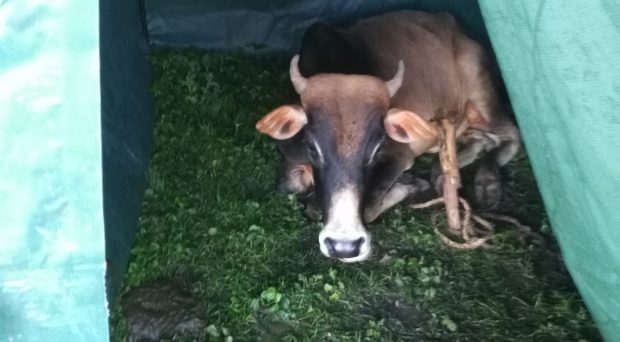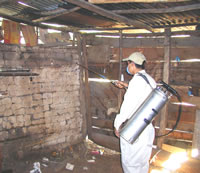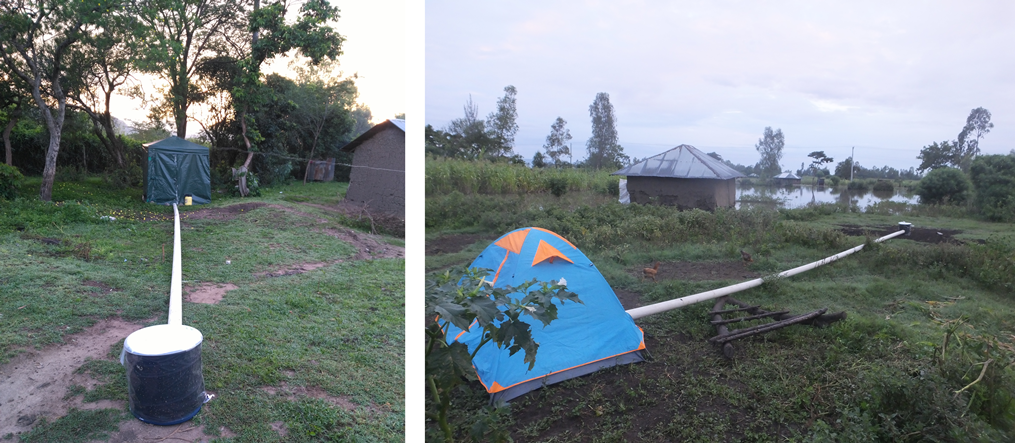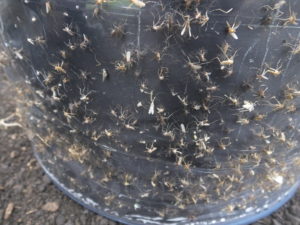
Our fight to control the spread of diseases transmitted through mosquito biting is complicated by behavioral adaptions in mosquitoes in response to control methods. In recent times, the greatest behavioral adaptations in mosquitoes have resulted from the introduction and sustained use of bed nets and Indoor residual spray (IRS).

Some insecticides used in bed nets and IRS have a repellant effect, deterring mosquitoes from entering houses. This leads to avoidance and mosquitoes adapting to feeding and resting outdoors. Another behavioral adaptation in mosquitoes is change in host preference. A mosquito species that prefers to feed on humans may adapt to feeding more on alternative hosts, like cattle, once humans become inaccessible.
One behavioral adaption that is particularly problematic for current prevention methods is mosquito species changing their biting time. Malaria-transmitting mosquitoes are nocturnal, being active and feeding at night. However, we are now finding that some species are adapting to bite either late in the evening, early morning or during the day when people are not under the protection of their bed nets.
Combined, these behavioral adaptations result in increased outdoor mosquito activity, meaning that they still have opportunities to bite people and transmit malaria. More concerning is that outdoor mosquito populations are hard to sample and control due to their dispersal in wide outdoor environments.
To effectively control outdoor mosquito populations and in turn outdoor malaria transmission, surveillance is critical. The sampling method we developed upon in our study, Host Decoy Traps (HDT), offers the prospect of a system to monitor and potentially control outdoor-biting mosquitoes.
Gold standard vs. new method
The current gold standard for measuring human biting rates is the Human Landing Catch (HLC) method. This involves a human volunteer sitting either indoors or outdoors at night with exposed lower limbs. Using a flash light, they check for any mosquito landing on their limbs. A mouth aspirator is directed at the mosquito and the volunteer sucks in air to draw the insect into the device. The trapped mosquito is then transferred into a holding cup where it is sustained before further laboratory procedures.
Although simple and somewhat rudimentary it gives the most direct measure of the number of mosquitoes that bite an individual per night.
An alternative method, Host Decoy Traps (HDT), utilize essential stimuli used by mosquitoes to locate their blood meal host: body heat, host odor and visual contrast. The trap is made of a water tight bag containing hot water at ~80⁰C, insulated with layers of polystyrene held in a bucket. A black fabric jacket is layered around the bucket to provide visual contrast and a transparent sticky sheet is placed over this jacket. The insulation controls heat loss and helps maintain the surface temperature on the fabric jacket at 30-40⁰C, providing thermal stimuli.

Natural odors from a host, either cow or human are exhausted from a ventilated tent and vented around the trap. Mosquitoes following the odor source are induced to land on the trap, upon which they get stuck on the sticky sheet. The stuck mosquitoes are recovered from the sticky sheet by dissolving the glue.

Even though Human Landing Catch technique is the gold standard for measuring human biting rates, it has two major disadvantages that are overcome with Host Decoy Trap. In HCL, there is a risk of exposure of the volunteer collectors to infectious mosquito bites. Giving the collectors malaria prophylaxis has been demonstrated to be protective in preventing malaria infections, however there is no such protection against other mosquito transmitted diseases, like arboviruses.
HLC also depends on individual expertise in collecting mosquitoes as they land on the volunteer; this is highly variable and prone to human error. On the contrary, in HDT, the collector is covered in a tent, hence protected from mosquito bites with zero risk of transmission. Also, all mosquitoes attracted to the trap, get stuck on the sticky sheet, hence no room for variableness in catch due to human error.

This is an educative piece and very helpful to our people
I can well remember when I was taught how to do landing counts and how almost all of the mozzies landed on me and not on the entomologist teaching me. I assumed this was because I was in blue jeans and he in a white lab coat and maybe my body temperature was higher or I was breathing more rapidly (I was nervous). In any case, I don’t think landing counts are much of a gold standard, no matter how many have accumulated over time. Also, I would be loathe to ask any of my students to perform such a potentially dangerous task. A less variable and safer alternative is much to be desired.